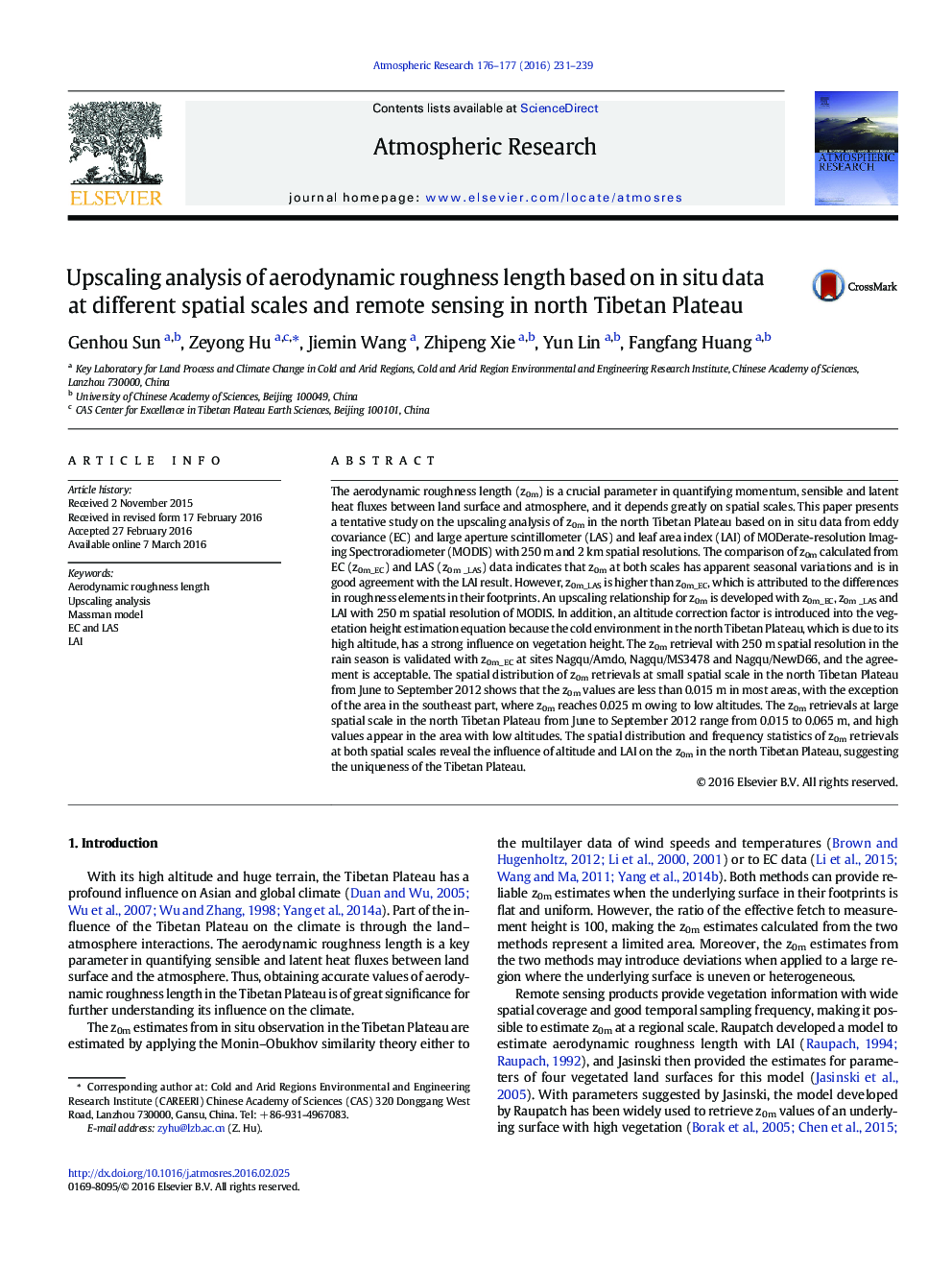| Article ID | Journal | Published Year | Pages | File Type |
|---|---|---|---|---|
| 6342954 | Atmospheric Research | 2016 | 9 Pages |
Abstract
The aerodynamic roughness length (z0m) is a crucial parameter in quantifying momentum, sensible and latent heat fluxes between land surface and atmosphere, and it depends greatly on spatial scales. This paper presents a tentative study on the upscaling analysis of z0m in the north Tibetan Plateau based on in situ data from eddy covariance (EC) and large aperture scintillometer (LAS) and leaf area index (LAI) of MODerate-resolution Imaging Spectroradiometer (MODIS) with 250Â m and 2Â km spatial resolutions. The comparison of z0m calculated from EC (z0m_EC) and LAS (z0m _LAS) data indicates that z0m at both scales has apparent seasonal variations and is in good agreement with the LAI result. However, z0m_LAS is higher than z0m_EC, which is attributed to the differences in roughness elements in their footprints. An upscaling relationship for z0m is developed with z0m_EC, z0m _LAS and LAI with 250Â m spatial resolution of MODIS. In addition, an altitude correction factor is introduced into the vegetation height estimation equation because the cold environment in the north Tibetan Plateau, which is due to its high altitude, has a strong influence on vegetation height. The z0m retrieval with 250Â m spatial resolution in the rain season is validated with z0m_EC at sites Nagqu/Amdo, Nagqu/MS3478 and Nagqu/NewD66, and the agreement is acceptable. The spatial distribution of z0m retrievals at small spatial scale in the north Tibetan Plateau from June to September 2012 shows that the z0m values are less than 0.015Â m in most areas, with the exception of the area in the southeast part, where z0m reaches 0.025Â m owing to low altitudes. The z0m retrievals at large spatial scale in the north Tibetan Plateau from June to September 2012 range from 0.015 to 0.065Â m, and high values appear in the area with low altitudes. The spatial distribution and frequency statistics of z0m retrievals at both spatial scales reveal the influence of altitude and LAI on the z0m in the north Tibetan Plateau, suggesting the uniqueness of the Tibetan Plateau.
Keywords
Related Topics
Physical Sciences and Engineering
Earth and Planetary Sciences
Atmospheric Science
Authors
Genhou Sun, Zeyong Hu, Jiemin Wang, Zhipeng Xie, Yun Lin, Fangfang Huang,
